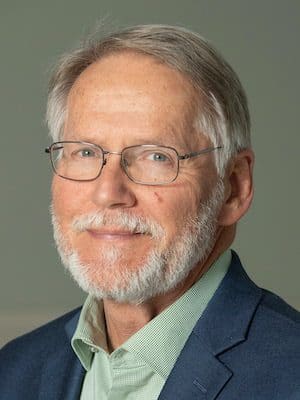The Baptist World Alliance held its Annual Gathering in Zurich this year, providing an ideal opportunity to explore that old city between meetings — and to enjoy some vacation time in Interlaken the following week. Here are a few things I learned.
The Swiss are really partial to their francs. Switzerland is one of the most expensive places to live, with a very high cost of living ($36 hamburger, anyone?). In most places I’ve traveled, dollars are quite welcome, but the Swiss don’t seem to want them. Before I’d managed to withdraw some francs from an ATM, Susan and I enjoyed a nice meal at an outdoor restaurant by Zurich’s scenic lake. The tab came to a 71.2 francs — bad enough, until I learned that they didn’t take credit cards — and demanded $85 if I paid in dollars, even though the official exchange rate was $1.01 to 1.00 CHF. I made sure to carry plenty of francs after that.
 Swiss trains really do run on time — most of the time. We rode trains almost every day, sometimes six trains a day to get from place to place. They were expensive, but nearly always on time, even the old ones with wooden seats. Nearly half of most trains were designated as first class, which naturally costs quite a bit more, but those cars were mostly empty, and they don’t allow second-class ticket holders to move up from their often-crowded seats.
Swiss trains really do run on time — most of the time. We rode trains almost every day, sometimes six trains a day to get from place to place. They were expensive, but nearly always on time, even the old ones with wooden seats. Nearly half of most trains were designated as first class, which naturally costs quite a bit more, but those cars were mostly empty, and they don’t allow second-class ticket holders to move up from their often-crowded seats.
There’s a reason your town doesn’t have a Swiss restaurant among its ethnic offerings. Swiss food consists mainly of sausage, cheese, potatoes, and bread, in various combinations. There are lots of words for sausages on the menus, and several of them mean “hot dog.”
Nearly every restaurant offers an extensive selection of beers. None of them have Diet Mountain Dew. Chocolate is considered a food group. Waiters almost faint if you try to order a Coke Zero with your fondue: they think it will make the melted cheese harden in your stomach. Not true.
In Interlaken, only the buildings look Swiss. The population, consisting largely of tourists, is composed largely of Indian families, wealthy Arab couples, and Asian tour groups in which young selfie-taking women outnumber males about nine to one. The city has made considerable efforts to attract wealthy and free-spending visitors from Saudi Arabia, Qatar, and other places, and they help keep the many stores selling expensive Swiss watches in business. There’s even a fancy watch store just beneath the observation platform between the peaks of Jungfrau and Monck, at 12,000 feet. High time.
Whoever labels hiking trails in Switzerland must be young, fit, and fast — and they never stop to take pictures or smell the edelweiss. We did a lot of hiking around Interlaken, but never in the time indicated on trail signs. We spent four hours on a loop trail on Shynige Platte that was supposedly a 1 1/2 hour hike. We did venture onto some side trails, including one to the top of the Oberberghorn, and we stopped often to drink water, take pictures of the gorgeous scenery, or listen to the music of tinkling cow bells — but even without stopping we couldn’t have done it in 1 1/2 hours.
We had a similar experience on a trail from Pfingstegg to a mountain hut called Bäregg at about 6,000 feet between the peaks of Schrekhorn and Eiger, taking four hours for what was advertised as a three-hour round trip. But, how could we speedwalk past majestic waterfalls and colorful wildflowers without stopping for photographs or a drink from a cool pool of water?
It really is hard to breathe at high altitude. The train station/tourist enterprise at Jungfraujoch — called “the Top of Europe” because it’s highest train station in Europe, attracts thousands of visitors a day, but most of them barely venture outside, spending most of their time in the decorated hallways, the “Ice Palace” (a tunnel through the ice with a few ice sculptures), a crowded Lindt chocolate shop, and a variety of restaurants.
There’s a place outside to play in the snow, but Susan and I were determined to leave the crowds behind and trek across the high reaches of the Aletsch Glacier to the Mönchsjochhütte, which offers both warmth, a basic restaurant, and even lodging for serious hikers or mountain climbers.
A path between the two is groomed by a snow cat every day and it’s hardly more than a mile, but uphill all the way. At around 12,000 feet, the air is so thin that we could only trudge 30-40 yards at a time before stopping to catch our breath.
Many people fall ill with altitude sickness. We made it, but it wasn’t easy. An early lunch was delicious, and fortunately, the downhill trek back was much easier.
Swiss lakes are amazing, and the tour boats are as precise as the trains. Interlaken gets its name from being located between two lakes, Brienze and Thun. Fed by glacial water, both are incredible shades of blue and green, with Brienze (which flows into Thun) being lighter in color. Boats run regular routes between towns and villages located on the shore, with waterfalls, hiking trails, and caverns among the good reasons for getting off the boat occasionally, confident that another will be along on schedule to pick you up.
Paragliding is an amazing experience, and not as scary as you think. I’ve always wanted to have the sense of flying with the wind in my face, and tandem paragliding with an experienced pilot is about as close as I’ll ever come. Susan insisted I try it and even paid for the ride, and it did not disappoint. I was close enough to the weight limit to be a little nervous, but running a few steps into the wind and soaring off a mountain ridge was an amazing feeling. After that, it was like sitting in an easy chair while the pilot did all the work, searching for thermals, explaining his strategy, pointing out sights, and bringing the paraglider safely down. It was certainly a high-light for me, and worth both the money and the butterflies.
The beauty of the earth is nowhere more evident than Switzerland. Alpine valleys, rugged mountains, snow-capped peaks, and shimmering lakes are just the beginning of the amazing landscapes found in Switzerland. If you want to be blown away by God’s handiwork, you won’t find a better place. The hills are alive with far more than the sound of music.













